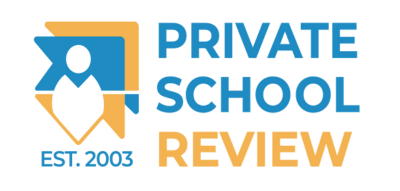By Maggie Twaroski, Truth Tree Contributor
Blogging is one of the simplest ways to boost organic traffic to your website, increase enrollment, and retain current families. And yet, only a small number of schools are actively posting content to their blog, and an even smaller number are posting good content. Sure, blogging requires a bit of time and skill, but the ROI is high. If you’ve been neglecting your blog lately (or don’t have one at all), now is the time to start posting.
Why your school needs a blog
SEO
In addition to your regular website content, your blog is a prime place to improve your SEO. Every blog post is an opportunity to use the short-tail and long-tail keywords that align with your strategy, so you’re consistently boosting your search engine rankings. Plus, the original content you produce will demonstrate your school’s experience, expertise, authoritativeness and trustworthiness (Google’s E-E-A-T).
Adaptability to AI
Now that users have built-in access to AI through their search engines, your school website may experience changes in organic traffic. When users turn on Google’s Search Generative Experience (SGE) in their browser, they’ll automatically see a summary of top search results, potentially lowering the need to manually click on search links. The best way to make sure your website still gets noticed is by creating original, high-quality content on your blog–that’s what AI will be looking for in the information it features.
School Communications
You may not think of your blog as a means of communication, but your blog content will be useful in keeping current families informed. If you’re posting engaging content regularly, your blog will gain a reputation for being a hub for news, guidance, and community. Providing helpful content to your parents and students will help in your retention efforts, especially once families start regularly “tuning in” to your blog.
Write content for your admissions funnel
Many schools use their blog to write about news updates–event overviews, student spotlights, etc. While there’s value in this type of content (more on that later), that’s just the tip of the blogging iceberg. If one of the goals of your blog is to recruit new students, you’ll need to broaden your content strategy to encompass multiple facets of your admissions funnel.
Let’s break it down.
Top-of-funnel content
At this stage, your prospects are just starting their school search, and are making general inquiries about their education options. They might be searching “private schools vs. public schools,” or “what to know about charter schools.” They haven’t narrowed in on any particular school yet–they’re looking for evergreen content that answers their high-level questions.
For top-of-funnel content, consider what priorities, concerns, and questions your prospects have in this stage, and write about those. Yes, it’s as simple as that! The goal here is to help answer questions, not to overtly “sell” your school.
So, what questions do your top-of-funnel prospects have? Based on that, your topics might look something like this:
- 10 reasons to consider private school
- The value of a Catholic education
- Is boarding school right for my child?
- What is Montessori education?
Mid-funnel content
Your leads have likely settled into an educational “niche” at this point (public, private, etc.), and are now looking for more specific content. They haven’t locked in on a particular school yet, but they’re narrowing their search to a handful of contenders. While your top-of-funnel content focused on broad topics, now is the time to delve further into the weeds and answer questions in more detail. Since their list of potential schools is getting smaller, you’ll want to prompt them further into your enrollment funnel by writing persuasively and encouraging readers to take some type of action–whether it’s registering for an open house, contacting your office, or taking a virtual tour.
Here are some examples of mid-funnel content:
- 5 magnet school success stories
- A day in the life of a boarding school student
- Best Montessori activities for elementary students
- Transitioning from public to private education? Here’s what you need to know
Bottom-of-funnel content
It’s decision time for your leads, which means your blog content should narrow in on what makes your school the right fit for them. Maybe it’s your impressive athletics program, your tuition options, or your easy application process. Take the best parts of your school and relate them to your leads’ questions, concerns, and priorities. This could look something like this:
- Staying safe on the field: An athletics safety plan
- How to afford private school on a budget
- Tips for completing your high school application
- Back to school tips: 5 ways to prepare for the new school year

Content for current families
New enrollment will always be on your priority list, but it’s just as important to retain current families. Your blog is a great place to provide support to parents and students who are already enrolled. While this might take the form of practical news updates, you might also focus your content on topics that showcase your school’s achievements, community life, faculty, and more. Brainstorm topics that your families would find helpful, fun, and engaging. This could be:
- Student spotlights
- A year in review
- Top ten school traditions
- Nutrition tips for school athletes
Blogging tips for schools
Now that you’ve considered which topics to post based on your enrollment goals, here are some tips to help make the blogging process as quick and easy as possible.
Have a content calendar
Save yourself time and keep your posts organized with a content calendar–a digital hub for all your future blog posts. Creating a content calendar can be as simple as noting your blog post titles and descriptions in a Google Spreadsheet, with the help of premade templates. Keeping your posts in a calendar ensures you stay on top of your deadlines, and keeps your team of writers on the same page. The best part? You’ll never have to frantically ask “what should I write about this week?” Your topics are already chosen and recorded in your calendar.
Post twice per week
For greater organic traffic and website conversions, blogging twice per week is ideal. If you’re posting less frequently now, don’t worry–twice per week is highly achievable if you schedule your content and if you have a few writers on staff. The more you blog, the quicker and easier it becomes, so don’t be afraid to commit to consistent posting.
Repurpose blog content
If your school has an active social media presence, you can repurpose just about any blog post into a social media post with few modifications. For example, if you published a blog post on back-to-school tips, you could repurpose that content into an infographic for your Facebook page. Or, you can simply post a link to a recent blog post on your social channels with a short caption enticing viewers to read. Either way, you won’t be creating a new social post from scratch. Work smarter, not harder, right?
Look for inspiration
If you don’t have a blog yet, or your current one is a little worse for wear, it can help to envision its best version by perusing other school blogs. While no two school blogs are the same, it doesn’t hurt to look at other websites for inspiration. Find some that stand out to you and make note of what kinds of content they’re publishing and how their posts look. Use these as inspiration for your own blog, but remember that all your posts should be original and adhere to your school’s unique brand voice.
Here are a few examples of high-quality school blogs: Oak Knoll School of the Holy Child, Washington Market School, Emma Willard, Avon Old Farms
Does Your School Need to Improve SEO?
There’s certainly more to it than blogging, and our team of SEO Specialists is ready to help you level up your search engine rank.











